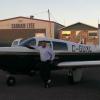Hot starting a M20K Rocket
-
Members Online
- takair
- JaM20C
- GRM321
- Greg Ellis
- TCC
- highflyer77
- William Munney
- Dieselman1220
- larryb
- Robm
- Dick Denenny
- Garmin Aviation Team
- slowflyin
- alexz
- MikeOH
- IvanP
- Ethan
- eman1200
- Parker_Woodruff
- ragedracer1977
- Skyland
- LOCOLJ
- gdwinc
- atpdave
- Daily
- TheAv8r
- NickG
- varlajo
- Vulcan81
- hubcap
- sheriffburrell
- Fritz1
- kortopates
- N201MKTurbo
- John J
- Deb
- Paul Thomas


Recommended Posts
Join the conversation
You can post now and register later. If you have an account, sign in now to post with your account.